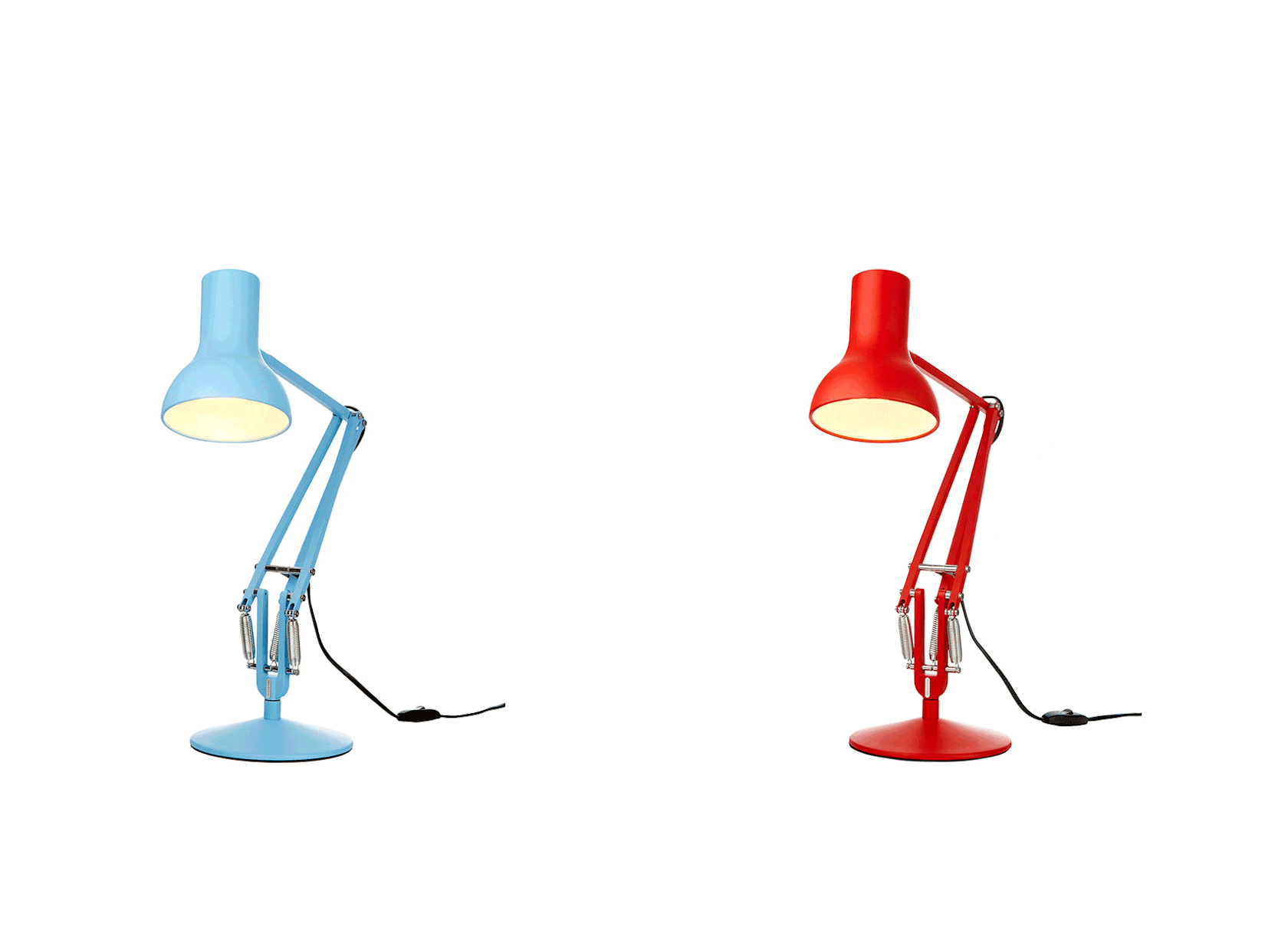While the Day of the Dead opening sequence might have stolen the spotlight in the latest 007 movie Spectre, a certain design icon very quietly infiltrated the set — and has made a cameo in just about every James Bond film not via product placement, but by selection. Just take a look back at the classic movies to the present blockbusters and observe the lab scenes in which Q introduces Bond to the latest gadget: you might spy the archetypal task lamp by British company Anglepoise.

Giant 1227
To know Anglepoise is to know the mother of all task lamps, quite literally. Prior to its invention, other articulating-arm lamps relied on counterweights and other mechanisms that didn’t necessarily allow for ease and speed of adjustment and focused lighting. And, then, in 1932 came British car designer George Carwardine, who discovered that pivoting arms supported by springs enable users to reposition the head — and have it stay put — at the lightest touch.

From left: Original 1227 Brass Maxi, Type 75 Mini, Type 75 Maxi
The design was then refined and modified for the masses and, not to mention, copied the world over by other lighting manufacturers. Meanwhile, its friendly anthropomorphic shape led to a starring role in a video short by amateur filmmaker Peter Ryde and, later, the logo animation for Pixar (the studio based its little white lamp on a Luxo-licensed model).

Type 75 Mini
Different formats and styles have since been added to round out the family including giant floor lamps, pendant luminaires, and adjustable wall sconces, many of which were on view at the 2015 edition of the International Contemporary Furniture Fair (ICFF) for the brand’s U.S. debut. In addition to exhibiting at its first American trade show, Anglepoise established its first North American office in New York City this year, as well.

From left: Original 1227 and Original 1227 Brass
It’s difficult to believe that such a household name in Europe — and the originator of the spring-arm lamp design that everyone else produces today — would be relatively unknown here. But we’ve a feeling that will soon be changing.

From left: Type 1228 and Paul Smith Edition




